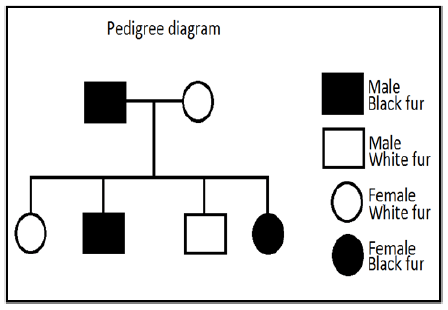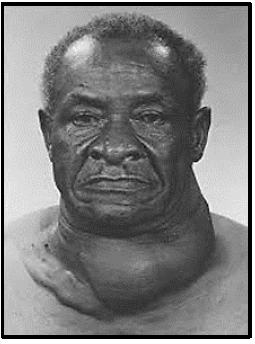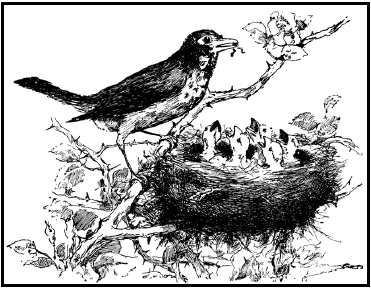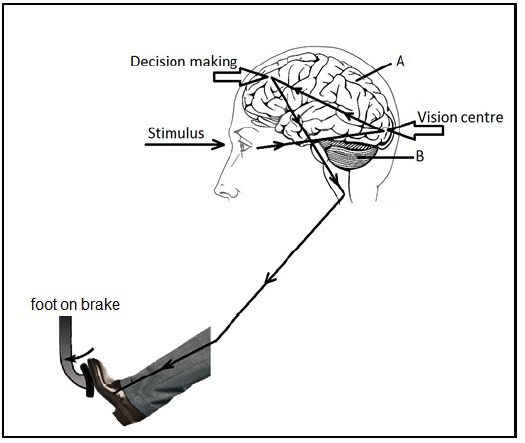LIFE SCIENCES GRADE 12 QUESTIONS - NSC PAST PAPERS AND MEMOS JUNE 2016
Share via Whatsapp Join our WhatsApp Group Join our Telegram GroupLIFE SCIENCES
GRADE 12
JUNE EXAMINATION 2016
NATIONAL SENIOR CERTIFICATE
INSTRUCTIONS AND INFORMATION
- Read the following instructions carefully before answering the questions.
- Answer ALL the questions.
- Write ALL the answers in your ANSWER BOOK.
- Start the answer to EACH question at the top of a NEW page.
- Number the answers correctly according to the numbering system used in this question paper.
- Present your answers according to the instructions of each question.
- Do ALL drawings in pencil and label them in blue or black ink.
- Draw diagrams, tables or flow charts only when asked to do so.
- The diagrams in this question paper are NOT necessarily drawn to scale.
- Do NOT use graph paper.
- You may use a non-programmable calculator, protractor and a compass where necessary.
- Write neatly and legibly.
Round off all calculations to two decimals after the comma.
SECTION A
QUESTION 1
1.1 Various options are provided as possible answers to the following questions. Choose the correct answer and write only the letter (A‒D) next to the question numbers (1.1.1‒1.1.9) in the ANSWER BOOK, for example 1.1.10 D.
1.1.1 The monomers of proteins are …
- amino acids.
- nucleotides.
- glucose.
- fatty acids.
1.1.2 When blood sugar level rises in the human body, the pancreas responds by secreting …
- glycogen.
- glucagon
- adrenalin.
- insulin.
1.1.3 Nerve cells that transmit impulses to the brain and spinal cord, are called …
- motor neurons.
- reflex arcs.
- sensory neurons.
- efferent neurons.
1.1.4 The physiological connection between the axon of one neuron and the dendrite of another is a/the …
- ganglion.
- synapse.
- capillary network.
- cell body.
1.1.5 The plant hormone that brings about elongation of internodes of stem is …
- auxins.
- abscisic acid.
- gibberellins.
- acetic acid.
1.1.6 The diagram below shows the offspring which result from the mating of a black and white rabbit. The allele for black fur is dominant over the allele for white fur. The percentage of heterozygous offspring produced in this generation would be …
- 25
- 100
- 50
- 75
1.1.7 Malfunctioning of which endocrine gland causes the disorder shown in the picture below?
- Adrenal gland
- Pituitary gland
- Pancreas
- Thyroid gland
1.1.8 The autonomic nervous system …
- shuts down homeostasis.
- consists of sympathetic and para-sympathetic systems.
- controls voluntary activities.
- functions independently of the central nervous system.
1.1.9 Which one of the following descriptions correctly represent the reproductive strategy shown in the diagram below?
| A | Precocial development | Able to feed themselves | |
| B | Altricial development | Unable to feed themselves | |
| C | Precocial development | Bodies covered with soft feathers | |
| D | Altricial development | Independent of their parents |
(9 x 2)
(18)
1.2 Give the correct biological term for each of the following descriptions. Write only the term next to the question number (1.2.1‒1.2.7) in ANSWER BOOK.
1.2.1 A disorder of the eye which occurs when the lens becomes opaque and cloudy resulting in partial or no vision
1.2.2 Receptors for balance found within the ampullae of the semi-circular canals
1.2.3 Alternate forms of a gene that control the same characteristic but in different ways
1.2.4 Undifferentiated embryonic cells with a potential to become any tissue or organ in the body
1.2.5 Hormone responsible for apical dominance in plants
1.2.6 Gland that secretes FSH and LH in females
1.2.7 The cells that secrete testosterone in males (7 x 1)
(7)
1.3 Indicate whether each of the statements in COLUMN Ɩ applies to A ONLY, B ONLY, BOTH A AND B or NONE of the items in COLUMN ƖƖ. Write A only, B only, both A and B, or none next to the question number (1.3.1‒1.3.6) in the ANSWER BOOK.
| COLUMN A | COLUMN B | |
| 1.3.1 | An inheritance in which none of the alleles is dominant | A: Incomplete dominance B: Co-dominance |
| 1.3.2 | A growth movement in response to gravity | A: Geotropism B: Phototropism |
| 1.3.3 | Sex-linked disorder | A: Sickle cell anaemia B: Down syndrome |
| 1.3.4 | A method of reproduction in which eggs are laid and development of these eggs takes place outside the mother’s body | A: Ovipary B: Vivipary |
| 1.3.5 | Stores waste produced by the embryo | A: Chorion B: Allantois |
| 1.3.6 | Corrective measure for myopia (short sightedness) | A: Concave lens |
(6 x 2)
(12)
1.4 In rabbits, grey hair is dominant to white hair and black eyes are dominant to red eyes. These letters below represent the genotypes of some rabbits:
| GG – Grey hair BB – Black eyes Gg – Grey hair Bb – Black eyes gg – White hair bb – Red eyes |
1.4.1 What are the phenotypes of the rabbits that have the following genotypes?
- Ggbb (1)
- ggBB (1)
- ggbb (1)
- GgBb (1)
1.4.2 A male rabbit with the genotype GGbb is crossed with a female rabbit with the genotype ggBb. The punnet square is set out below:
| Gb | Gb | Gb | Gb | |
| gB | GgBb | GgBb | GgBb | GgBb |
| gb | Ggbb | Ggbb | Ggbb | Ggbb |
| gB | GgBb | GgBb | GgBb | GgBb |
| gb | Ggbb | Ggbb | Ggbb | Ggbb |
How many out of the 16 offspring have:
- Grey fur and black eyes (1)
- Grey fur and red eyes (1)
- White fur and black eyes (1)
- White fur and red eyes (1)
1.5 The diagram below illustrates a homeostatic process to restore the correct level of water in the blood. Study the diagram and answer the questions that follow.
1.5.1
- Does the volume of water in the blood at A increase or decrease? (1)
- Identify the gland labelled B. (1)
- Name the hormone C. (1)
- In which specific part of organ D does the reabsorption of water take place? (1)
- What quantity of water E is lost in urine? (more / less) (1)
TOTAL SECTION A: 50
SECTION B
QUESTION 2
2.1 Study figures 1 and 2 below and answer the questions that follow.
2.1.1 Identify the processes shown in figures 1 and 2. (2)
2.1.2 Which ONE of the processes shown in figures 1 and 2 takes place before cell division starts? (1)
2.1.3 Predict the result if the process mentioned in QUESTION 2.1.2 does not take place. (2)
2.1.4 Sometimes ‘errors’/ mistakes happen in both processes. What is the specific name for this error? (1)
2.1.5 State any TWO causes of the error mentioned in QUESTION 2.1.4. (2)
Study the table below and answer the following questions.
| t RNA | Amino acid |
| CAC | Valine |
| UGA | Threonine |
| UAA | Isoleucine |
| CCC | Glycine |
| ACC | Tryptophan |
| GUC | Glutamine |
| GUG | Histidine |
At the end of the process shown in FIGURE 2, three amino acids are formed as shown below:
| Glutamine ‒ Histidine ‒ Valine |
2.1.6 By referring to the table above, write, from left to right, the correct base sequence of codons 1 to 6. (6)
2.1.7 DNA profiling is used in forensic investigations worldwide. However, some people argue that it is NOT always reliable. State TWO reasons for their argument. (2)
2.1.8 List TWO sources of DNA evidence in a crime scene. (2)
2.2 The diagram below shows a biotechnology research project to improve quality of sheep. Study the diagram and answer the questions.
2.2.1 Identify the biotechnological process represented in the above diagram. (1)
2.2.2 Describe the process mentioned in QUESTION 2.2.1. (5)
2.2.3 Does sheep X inherit desired characteristics from Sheep A or B? (1)
2.2.4 Explain your answer in QUESTION 2.2.3. (2)
2.3 Research was conducted to investigate the effect of blood alcohol level of a driver on the reaction time. (Reaction time: time taken to respond to an external stimulus.) The researcher measured the reaction time of six volunteers who were given different amounts of alcohol. The result of the investigation is given below. Study the information and answer the questions.
| BLOOD ALCOHOL CONCENTRATION (%) | REACTION TIME (SECONDS) |
| 0,08 | 0,32 |
| 0,10 | 0,38 |
| 0,12 | 0,44 |
| 0,14 | 0,50 |
| 0,16 | 0,56 |
| 0,18 | 0,62 |
2.3.1 Identify the independent variable in this investigation. (1)
2.3.2 Suggest a control for this investigation. (1)
2.3.3 State TWO ways each to improve the:
- Validity and (2)
- Reliability of the investigation (2)
The diagram below illustrates how a normal driver applies brakes when he sees and an obstacle on the road. Study the diagram and answer the questions that follow.
2.3.4 Identify the parts labelled A and B. (2)
2.3.5 By referring to the diagram, explain how driving under the influence of alcohol may increase the reaction time of a driver. (5)
[40]
QUESTION 3
3.1 Study the graphical representation of a normal menstrual cycle and answer the questions.
3.1.1 Name the source of the hormones below:
- Oestrogen and (1)
- Progesterone(1)
3.1.2 Describe the effect on the uterine wall when there is …
- an increase in the level of oestrogen between day 4 and 14. (2)
- a drop in the level of progesterone (2)
3.1.3 What possible conclusion can be drawn if the progesterone level remains high after the 28th day of the cycle? (1)
3.1.4 Explain why the insertion of IUD (Intra Uterine Device) into the uterus does not stop the occurrence menstrual cycle but prevents pregnancy. (2)
3.2 Study the diagram below and answer the questions.
3.2.1 Identify parts:
- A
- B and
- D
(3)
3.2.2 Explain why the premature breaking of the part labelled C is regarded as fatal or life threatening to the survival of the foetus. (3)
3.2.3 Which one of the labelled part is responsible for the production of progesterone? (1)
3.2.4 Describe how exchange of nutrients, waste products and gases takes place between the mother and the foetus even though the mother’s blood does not mix with the foetu’s blood. (4)
3.3 The diagram below illustrates a phase in meiosis. One of the chromosomes has failed to separate due to a malfunction. Study the diagram and answer the questions that follow:
3.3.1 Identify the phase of meiosis illustrated above. (1)
3.3.2 Give a reason for your answer to QUESTION 3.3.1. (2)
3.3.3 Name the error occurred during the above phase of meiosis. (1)
3.3.4 Draw a diagram of the cell above as it would appear during metaphase 1. (4)
3.4 Study the extract below and answer the questions.
| In his latest budget speech, Finance Minister Pravin Gordhan announced that a sugar tax will be levied with effect from 1 April 2017. Although, the manufacturers are taxed, the new tax proposal aims at generating additional funds towards improving the quality of health care. Its main goal is to reduce public consumption of sugar per day through price increase. The fund generated could be used to support programs and research designed to reduce human and economic costs of diabetes. |
3.4.1 State TWO objectives of the sugar tax proposed for 2017. (2)
3.4.2 Diabetes is one of the health concerns highlighted in the extract. Describe how diabetes could adversely affect the productivity of labour as well as the economy of South Africa. (2)
3.5 The diagrams below illustrate how a human eye accommodates distant and near vision. Study them and answer the questions.
3.5.1 Which lens (A or B) is adjusted to accommodate distant vision? (1)
3.5.2 Which numbered part regulates the amount of light entering the eye? (1)
3.5.3 Which part can be damaged permanently if laser beams are directed into the eye? (1)
3.5.4 Explain how the changes from A to B were brought about. (5)
[40]
TOTAL SECTION B: 80
SECTION C
QUESTION 4
4.1 Both humans and plants are able to respond to external stimuli. Hearing occurs in humans followed by instant turning of the head to inspect the source of sound. Describe how this process occurs in humans. In your essay also describe how plants respond to unilateral light stimulus.
Content: 17
Synthesis: 3
TOTAL SECTION C: 20
GRAND TOTAL: 150